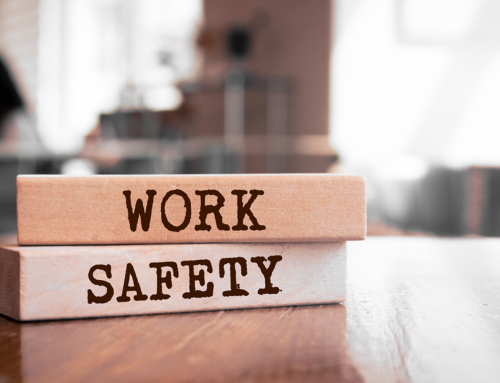How culture affects driving and road safety
One of the perks of working with JOMC is the opportunity to visit far flung places and experience first-hand the cultures prevailing in those countries. I’m usually being driven rather than driving, but as passenger I’m afforded more time to observe how culture plays a huge part in road safety. So here’s some observations from my travels.
UK: 2200 road deaths per year, considered a good performer with only 6 per day
A Breton once said to me that driving in the UK is “easy because people do what they’re supposed to.” Here people generally do adhere to the rules and even poor drivers are predictable: you know that white van man will shovel you out of the way as soon as possible so he can resume his unimpeded middle lane hogging.

I’m occasionally inattentive myself but I accommodate this by going fairly slowly and leaving a wide margin for error. Unfortunately there are still many drivers on UK roads who cope with driving badly as long as no one else makes a mistake. But when they do, an accident happens because there’s no safety margin.
Cycling in the UK can be hazardous due to the culture prevailing of viewing cyclists as a sub-species. I’ve experienced two serious collisions and countless near misses all of which have been the fault of the motorist. Then there’s the tale of an individual who tried to run me off the road deliberately…
FRANCE: 4000 deaths per year, a moderate performer for the EU
The French have really got on top of road safety recently; in 2003 they had 8000 road deaths, making it the principle cause of death in the under 30s. The principle causes were cultural: speed limits existed but were not enforced and likewise drink driving was rife due to lack of blow into the bag s’il vous plait.
So heavy negative reinforcement was used to achieve the improvement: the threat of jail. I wouldn’t recommend this as a mechanism for workplace culture change, but attitudes to drinking and speeding were so embedded that this was the only viable approach.
French drivers don’t seem to be too precious about the bodywork of their cars either. Many of them sport accident damage from long past encounters with other vehicles. I guess this tells you who to avoid.
French pedestrians react with astonishment when you stop at a zebra crossing to allow them to cross. That’s a major difference from the UK. So if you step out on to a crossing on the assumption that motorists will stop: don’t. They’re just as likely to mow you down.
Cycling in France is a joy with it being a national sport. Drivers give cyclists a wide berth and overtake only at appropriate points in the road. Vive la France!
GERMANY: 4000 deaths per year but a larger population, this represents 5.1/100000 people (UK is around 4/100000)
I’ve limited experience here (and I hate to stereotype) but flair and imagination really don’t have a place on public roads. Many autobahns are just dual carriageways and the nearside lane is largely viewed as only fit for trucks. Much of the motorway network is free of speed limits and combined with the lack of a third lane this often results in a Mercedes appearing (dangerously close) in your rear view mirror flashing its lights. Once you’re out of the way the offending vehicle then resumes light speed on its headlong dash to the Andromeda galaxy. Inevitably these 100+ mph speeds result in some spectacular accidents which might explain the fatality rate.
Rule-based behaviour is evident on Germany’s roads. When a speed limit is applicable the motoring herd will drive exactly to that limit. Drivers in Germany also stop at red lights whereas in Italy, for example, a red light might be treated as advisory.
When traffic is merging due to a lane closure, Germans apply Reißverschluß – the zipper rule. That’s where cars filter into the open lane in turn resulting in minimal delays, unlike the UK free for all rule that results in BMWs stacked against the cones at the end of the closed lane trying to force their way into the open lane and holding everyone up.
THE NETHERLANDS: around 700 deaths per year 4/100000, good performers
A cyclist’s paradise. Not just because it’s flat so flat: culture plays a huge part too. Outside Arnhem railway station I counted 6-700 bicycles racked up. Cycling as daily transport is incredibly popular in the Netherlands and with good reason. Much of the road network is equipped with cycleways, not the dismal white line affairs we’re used to in the UK, but wide separate carriageways running parallel to the road.
Dutch legislation is cunningly constructed so that if a car and cyclist collide the motorist is assumed to be at fault unless they can prove otherwise. Drivers treat cyclists with extreme respect anyway. In Ijmuiden one morning I witnessed a woman cycling along with a child on the back of her bike with one hand on the handlebars of another bicycle piloted by her other child. She was carrying out this precarious operation in comparative safety because car drivers were taking extra care around her family. Such activity would probably amount to infanticide in the UK.
RUSSIA: something like 30,000 road deaths per year (a similar rate to Delhi) at 21/100000, in contention as having the most dangerous roads in the world
I’m convinced that Russian cars are built with a dashboard switch marked stop or max to control the speed of the vehicle. Much of the reason for inappropriate use of speed in Russia is the traffic cops. Last year the Russian Traffic Police Division managed to beat the Zimbabwean Agricultural Special Police Unit into second place in the world law enforcement corruption finals.
The flip side of this is that the average Russian driver expects to have to pay a bribe whether they’ve committed an infringement or not when they’re stopped. So they take a might as well get hung for a sheep as a lamb attitude and push the pedal to the metal.
Russian driving is characterised by creative overtaking. Don’t let minor inconveniences like high speed oncoming traffic prevent you from overtaking, just go for it. And either force traffic in the opposite carriageway onto the verge or enjoy a head-on at, say, 160mph.
ZAMBIA: 1200 deaths per year but car ownership is comparatively low, Africa averages 27/100000
First rule is you must drive a Toyota. Rule 2 is assume nothing. Around the next blind bend on the Ndola to Kitwe dual carriageway there will be a broken down bus in the centre of the road. The bus (with Chelsea FC painted on its mudflaps) will be marked by branches laid in the road behind it to warn fellow motorists. But if you barrel into the bend at 70 mph assuming all is clear the branches won’t warn you in time.
And don’t assume that the pot-holed asphalt surface of the road will not suddenly become a dirt track featuring craters of lunar proportions. Nor should you assume that red lights will be complied with. They generally are (eventually) but have to be very red before people will stop.
Like India, one shouldn’t be be shy of the horn button. People need to know that you are there because they probably won’t look. The bottom line is that if you make appropriate use of speed and your reactions are good, you’ll survive. I was offered a car in Zambia but refused this act of kindness because I’m simply too old and slow-witted to drive with any degree of safety in these conditions. Sadly, ageing and commensurate slowing of reaction times aren’t a problem in Zambia as due to poverty and disease the average life expectancy is 52.
DELHI, INDIA: with a population of 17m and 3000 road deaths per year one can extrapolate a figure for the whole country (a similar rate in the UK would suggest 10000 deaths per year)
 The prevailing culture here is that people don’t follow any rules. For example you may find an ox cart looming out of the fog in the outside lane, mercifully going in the same direction as the traffic, but managing only 3 mph. Lane discipline doesn’t exist and drivers (and in particular motorcyclists) will just go for whatever gap in the traffic that reveals itself with complete disregard for their own safety or anyone else’s.
The prevailing culture here is that people don’t follow any rules. For example you may find an ox cart looming out of the fog in the outside lane, mercifully going in the same direction as the traffic, but managing only 3 mph. Lane discipline doesn’t exist and drivers (and in particular motorcyclists) will just go for whatever gap in the traffic that reveals itself with complete disregard for their own safety or anyone else’s.
Right of way in India is not dictated by highway code or road position but by vehicle size. If you’re bigger than everyone else then you can enter the roundabout with no perceptible decrease in speed provided that you sound your horn. How often does the average UK driver sound their horn? Once per year, twice per year perhaps? Well, in India horn buttons must be specially reinforced as they are pressed from the moment the handbrake is released to the moment it is reapplied. And with good reason. Because nobody looks before they manoeuvre. You must advertise your presence to other drivers or they simply assume you’re not there and pull into you.
This is slightly different to Russia where they look first and then overtake anyway. Indian drivers have enhanced this process by eliminating the look first bit, although the net effect is the same.







Excellent article Steve. I am in France at the moment, and there are a couple of articles in Le Figaro regarding accident rates and safety strategies. Their data (i.e. 4,000 deaths per annum) agrees with yours. I am surprised that the fatality rate is not higher than it is given the quality of driving that I have experienced lately!! And the motor bikes are even worse than cars.